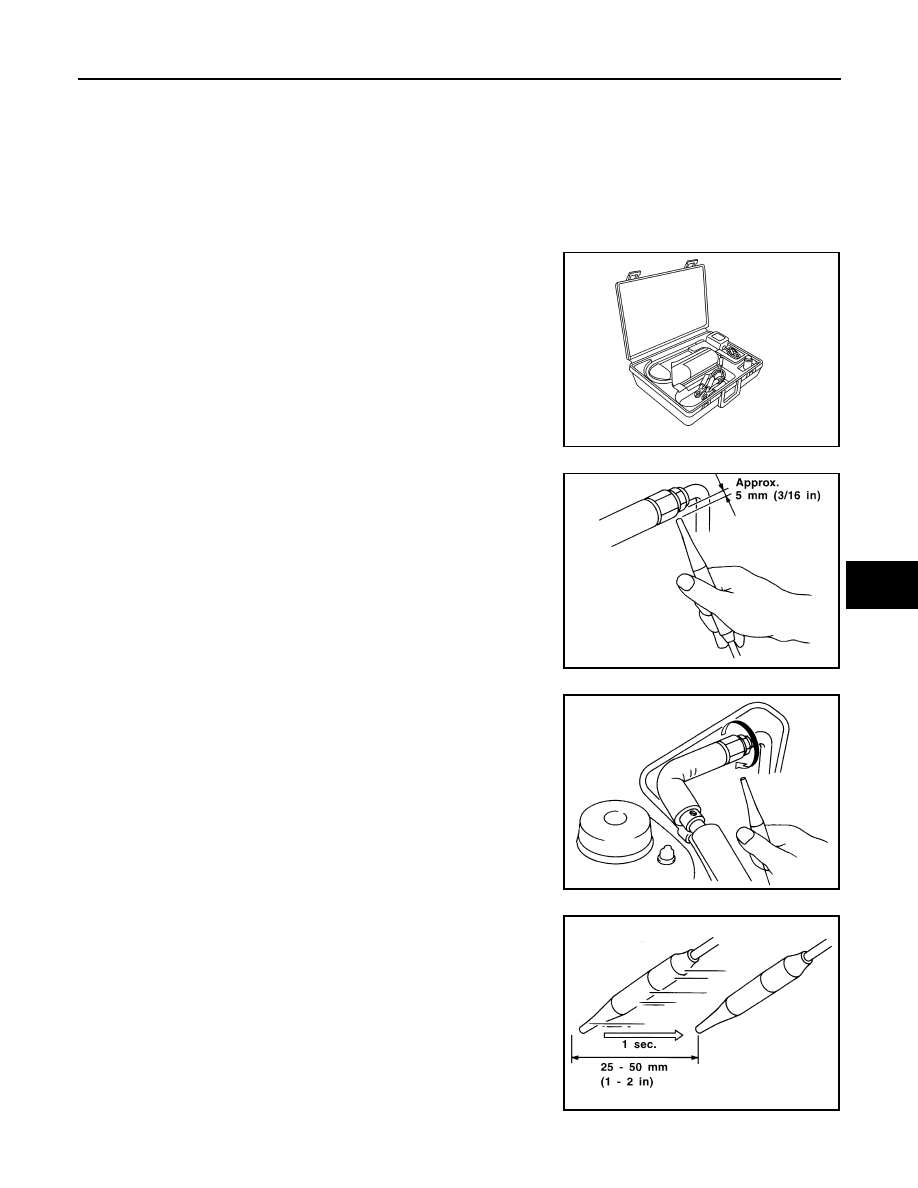Nissan Titan A60. Manual - part 574

ELECTRICAL LEAK DETECTOR
HA-25
< PERIODIC MAINTENANCE >
C
D
E
F
G
H
J
K
L
M
A
B
HA
N
O
P
ELECTRICAL LEAK DETECTOR
Electronic Refrigerant Leak Detector
INFOID:0000000006163108
PRECAUTIONS FOR HANDLING LEAK DETECTOR
NOTE:
When performing a refrigerant leak check, use a electronic refrigerant leak detector (J-41995) or equivalent.
Ensure that the electronic refrigerant leak detector (J-41995) is calibrated and set properly according to the
manufacturer's operating instructions.
The electronic refrigerant leak detector (J-41995) is a delicate
device. To use the electronic refrigerant leak detector (J-41995)
properly, read the manufacturer's operating instructions and perform
any specified maintenance.
1. Position the probe approximately 5 mm (3/16 in) away from the
point to be checked as shown.
2. When checking for leaks, circle each fitting completely with the
probe as shown.
3. Move the probe along each component at a speed of approxi-
mately 25 - 50 mm (1 - 2 in)/second as shown.
CHECKING PROCEDURE
AHA281A
SHA707EA
SHA706E
SHA708EA